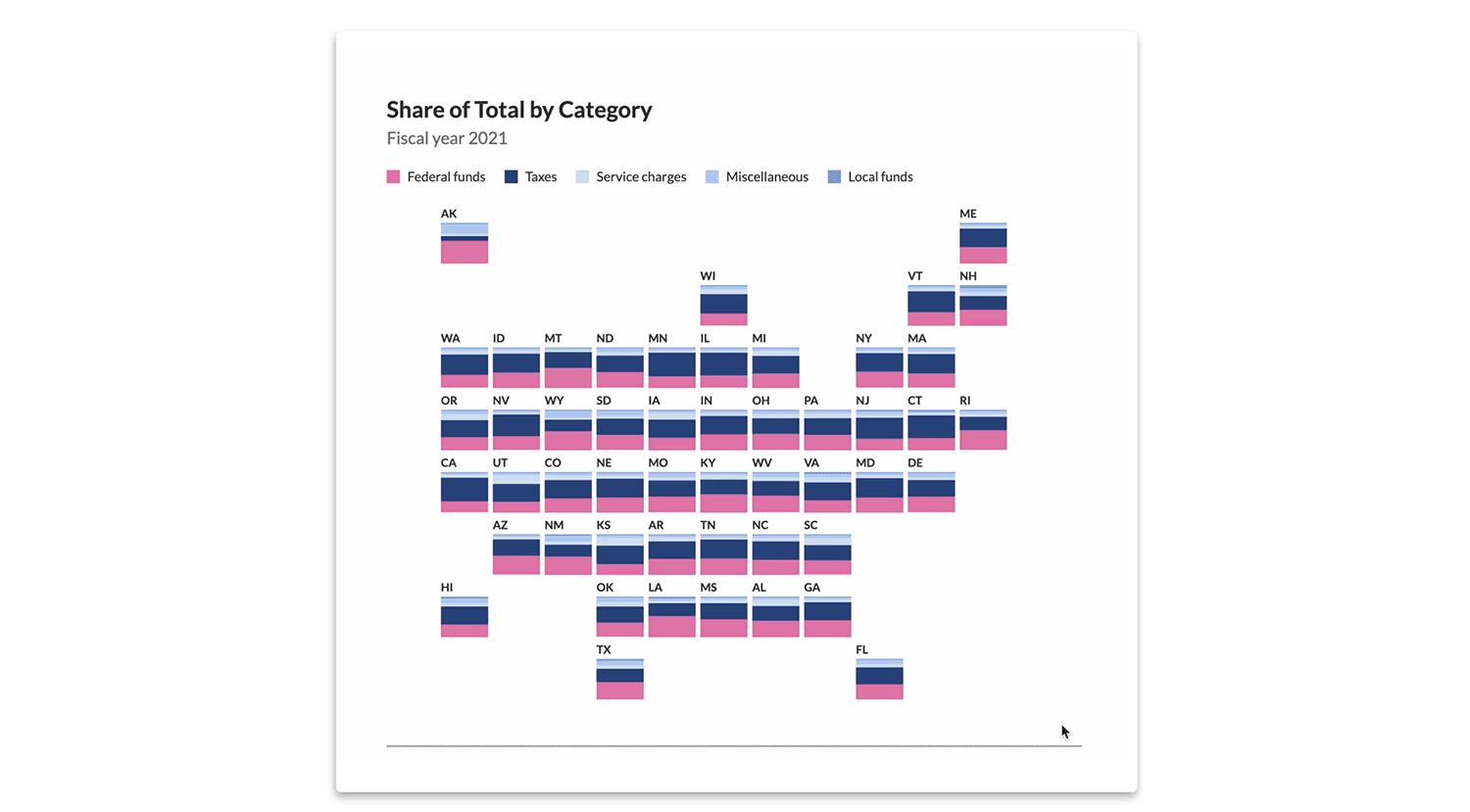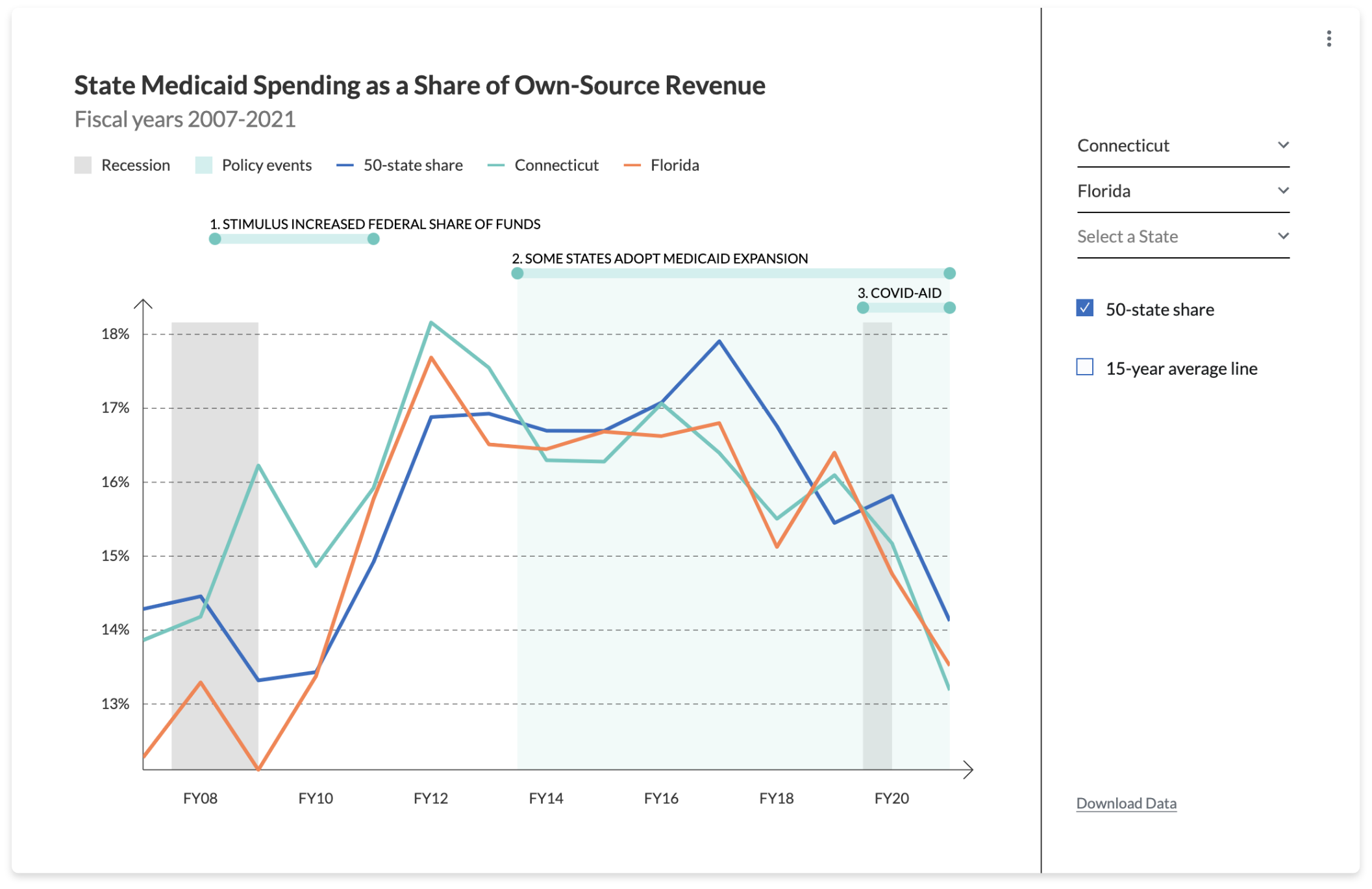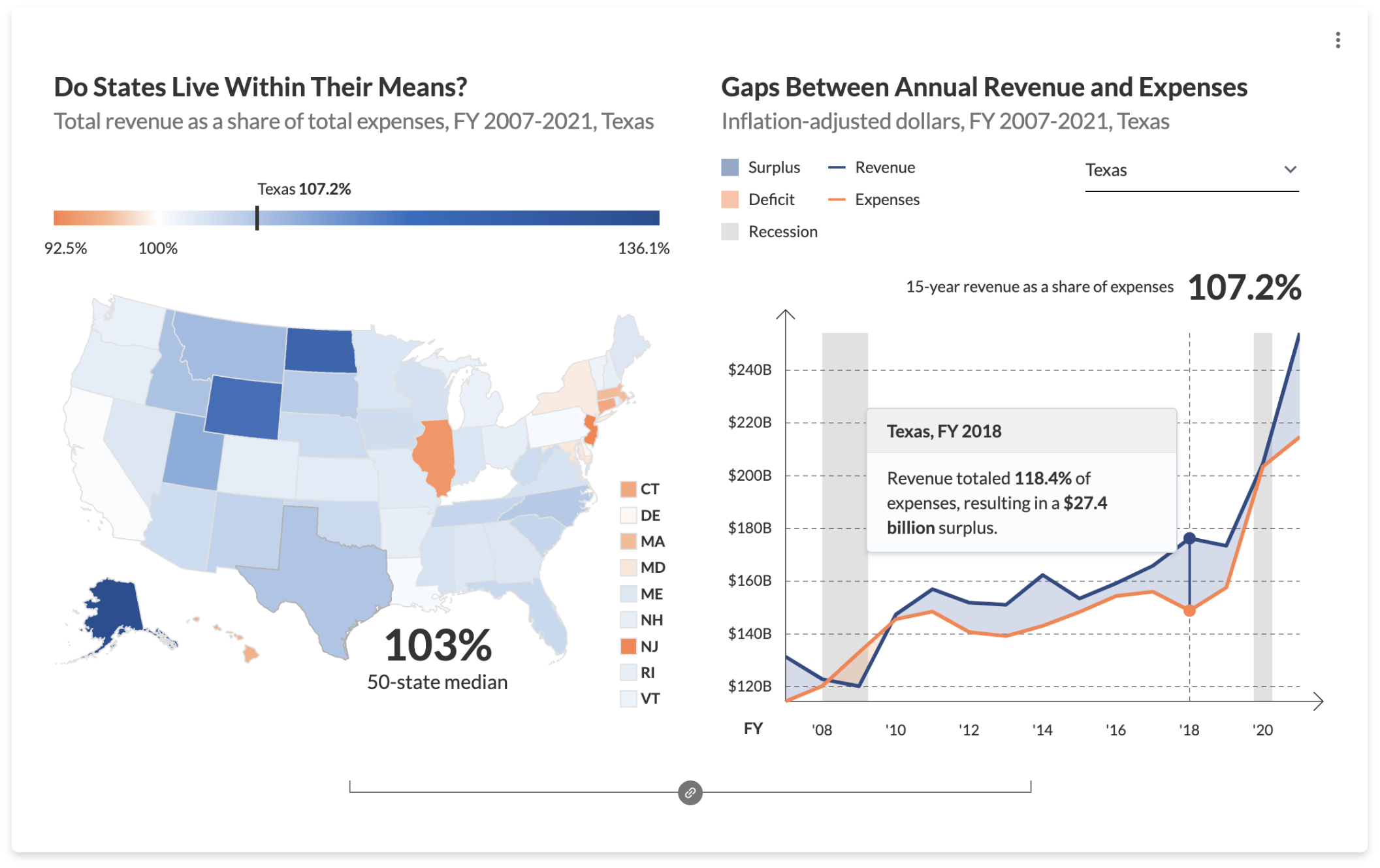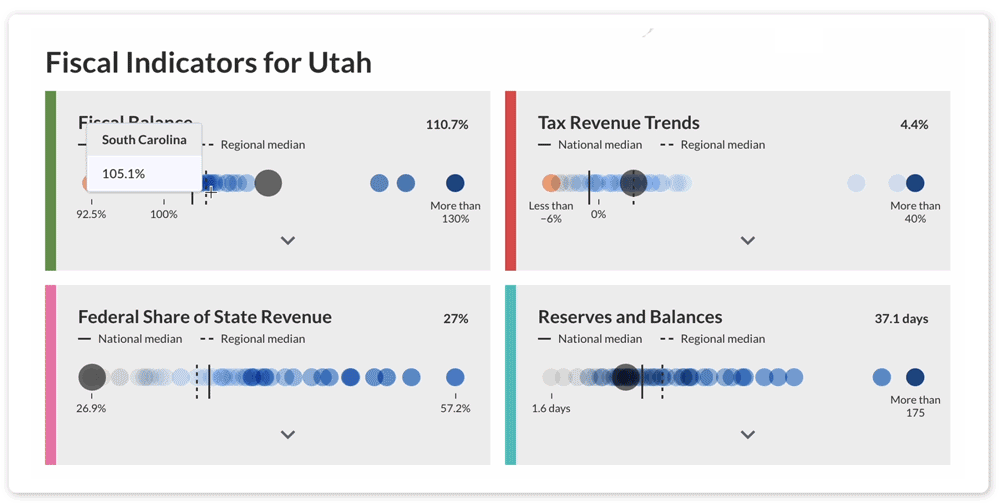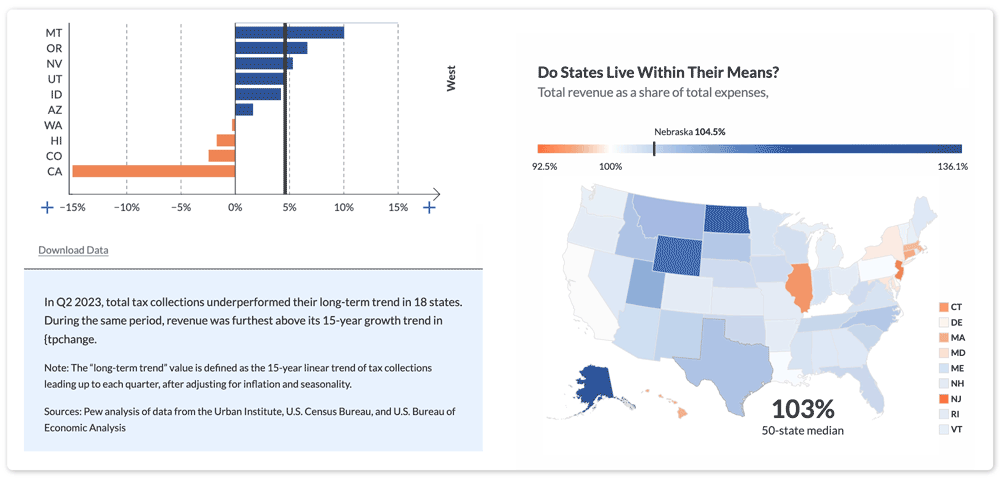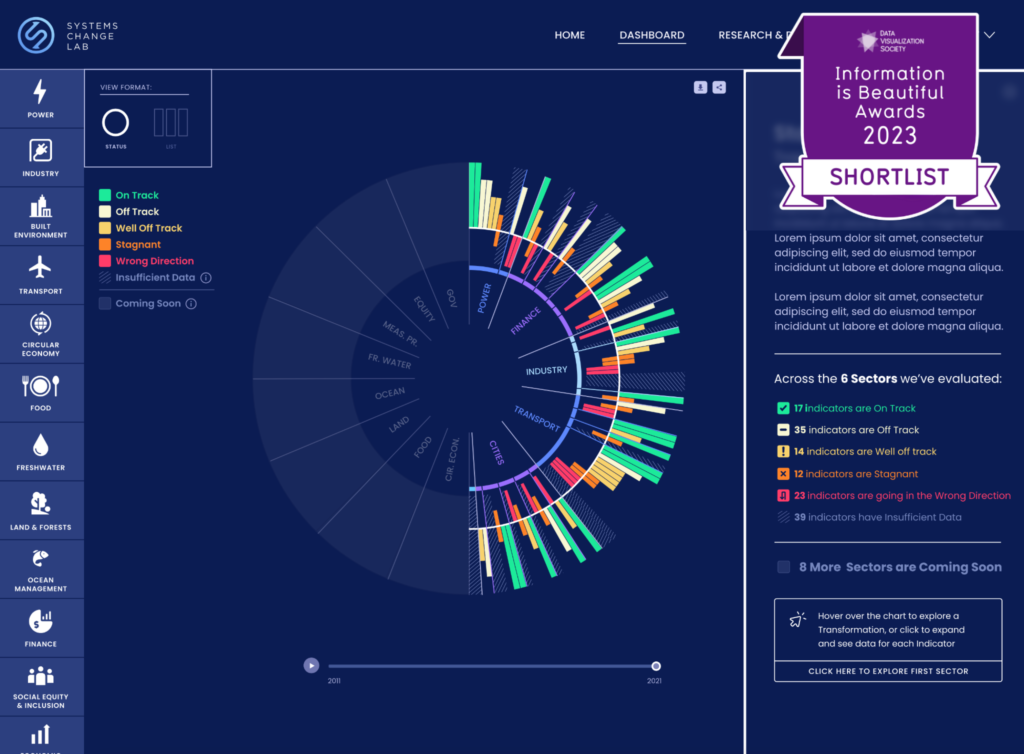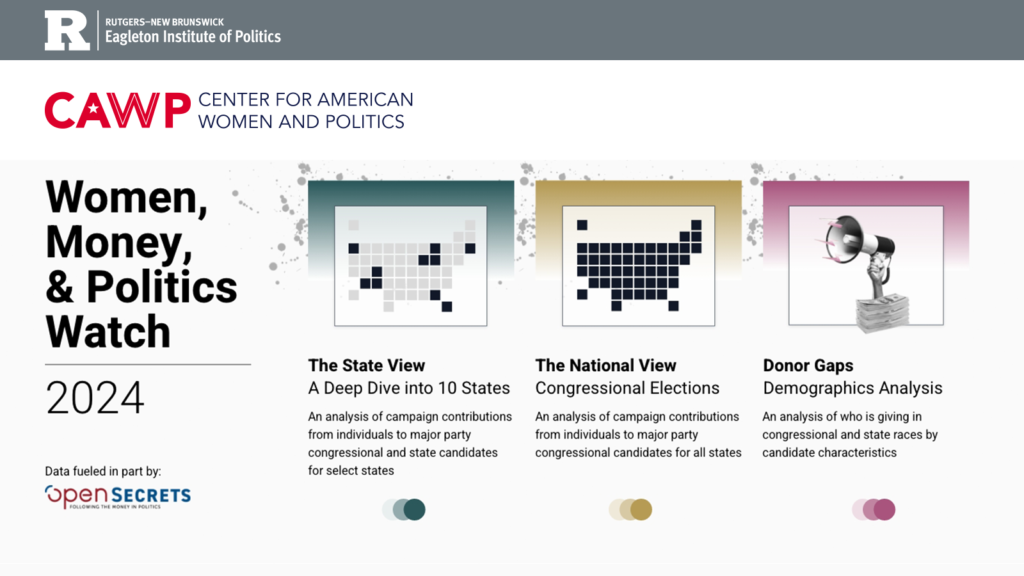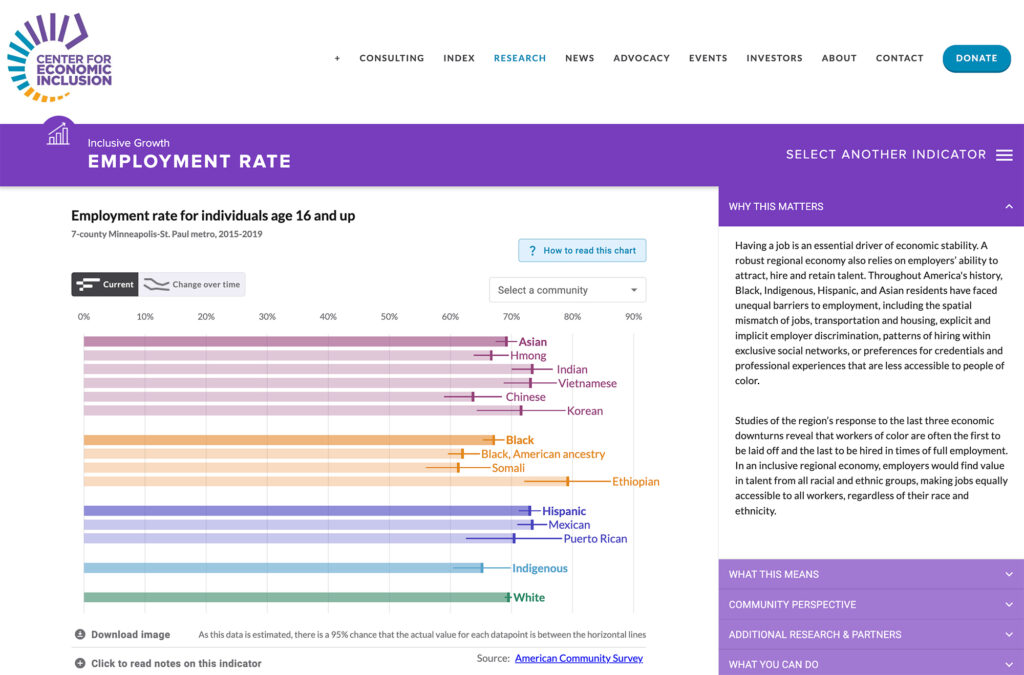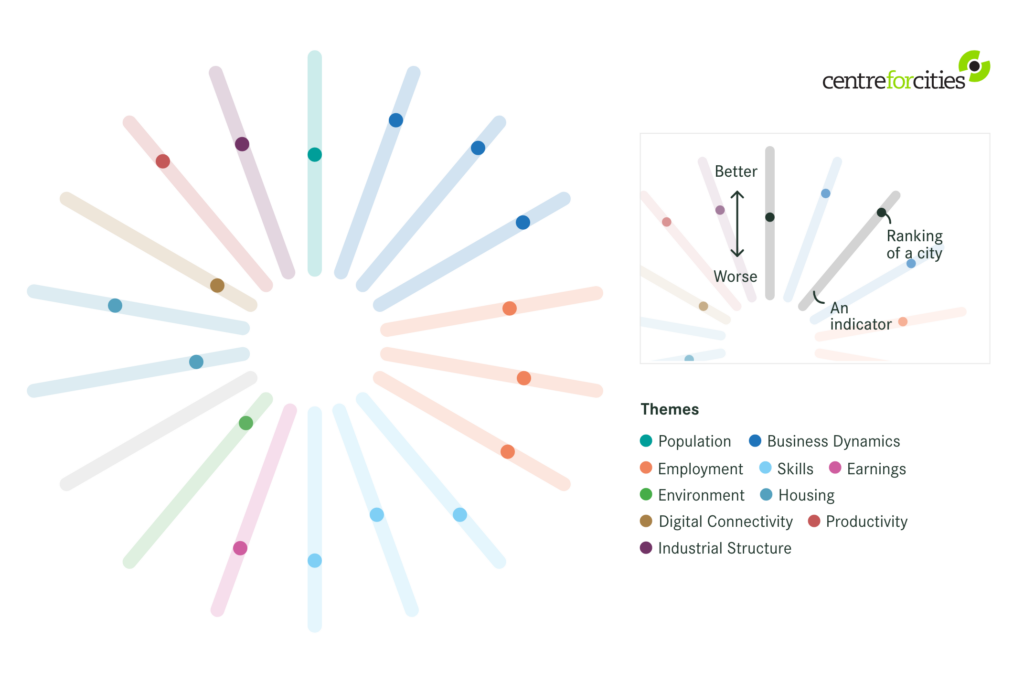Revamping Pew’s Fiscal 50 with Dynamic Visualizations
Pew Charitable Trusts / 2024 / Economics, Politics & Government
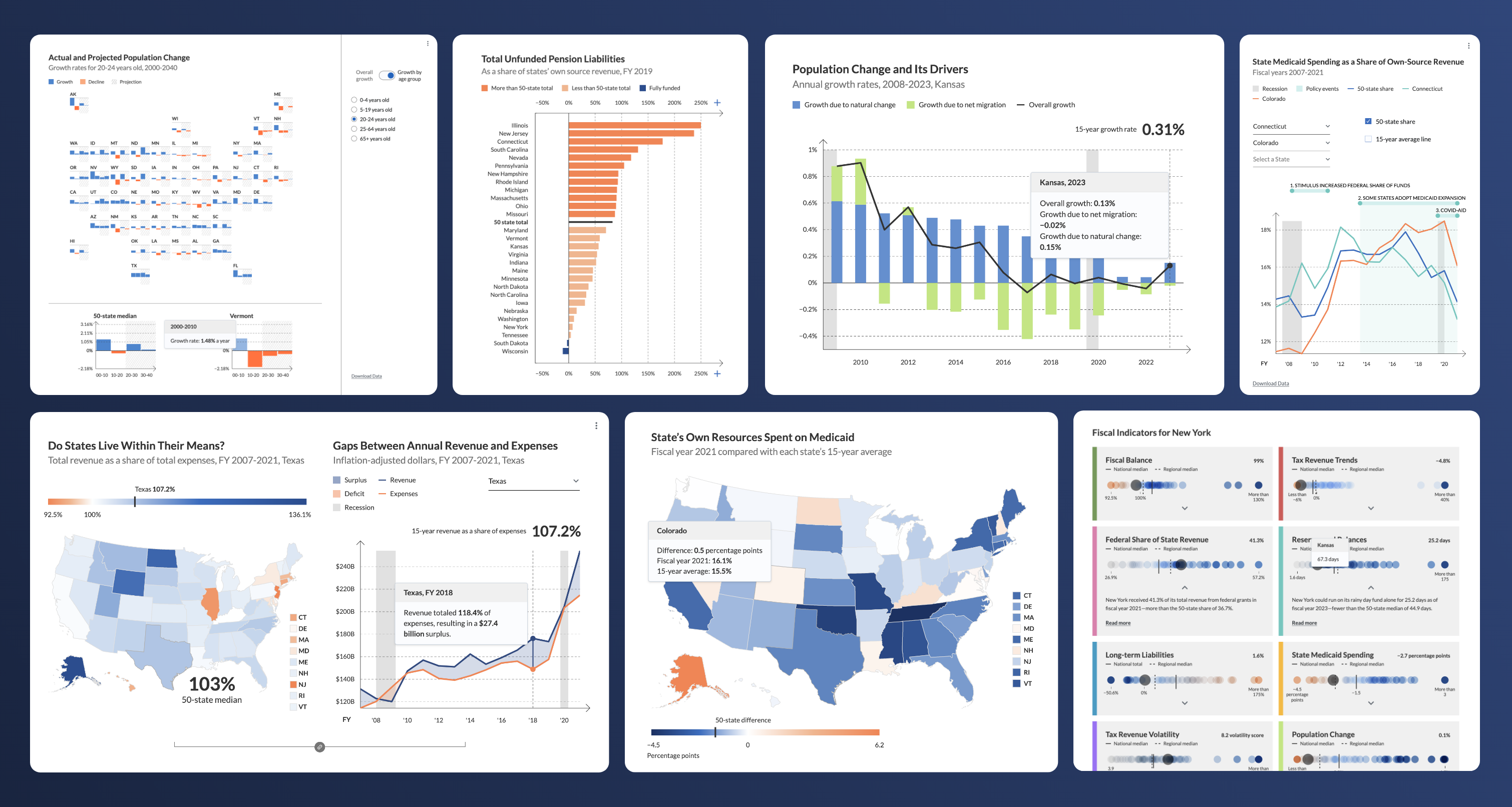
Overview
When their respected Fiscal 50 website needed refreshing, The Pew Charitable Trusts connected with Graphicacy to make it mobile-friendly and modern, complete with new state-specific pages.
- Services
- CMS Integration
- Data Management Solutions
- Data Visualization
- Engineering
- Geospatial Mapping
- Ideation & Prototyping
- Information Design
- Interactive Web Applications
- UX/UI Design
